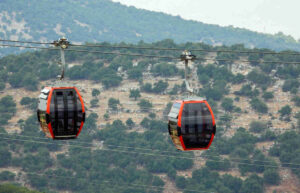In this post we have stopped to analyse which are the main monuments in Jordan if we stick to what their banknotes show. And the result is very interesting. Not surprisingly, a country’s banknotes have a lot of value: logically, economic value, but if you look at them calmly, they also have an important symbolic value. In them, the competent Central Bank includes the main elements of the country’s identity: characters, fauna, flora and also monuments of interest, which tourists can meet during their trips.
Types of banknotes: list and description
As you may know, the official currency in Jordan is the Jordanian dinar, issued by the Central Bank of Jordan. The grouping of dinars results in 5 different types of banknotes:
- 1 dinar
- 5 dinars
- 10 dinars
- 20 dinars
- 50 dinars
Its design is distributed on the front and back. Below we list the elements represented, according to the series released from 2022.
1 dinar: a nod to native nature
The 1 dinar banknote is the only one that does not include any monument, neither historical-artistic nor natural. While the obverse shows the figure of Husayn ibn Ali (key king and ruler during the Arab Rebellion), the reverse gives all the prominence to the Sinai bullfinch (Carpodacus synoicus), considered the national bird of Jordan. Its natural habitat is the desert and it can be spotted relatively easily in Petra and Wadi Rum.
5 dinars: Petra
The main protagonist of Jordanian 5 dinar banknotes is (with the permission of Abdullah I, king of Jordanian independence) Petra. This destination, declared a Unesco World Heritage Site and a real tourist attraction for thousands and thousands of tourists, appears on both the front and back. In the case of the obverse, the complete façade of the Treasury, its most symbolic construction. And in the case of the reverse, an enlarged detail of the semicircular structure of said Treasure.
10 dinars: Qusayr ‘Amra and Amman
On this banknote, two different monuments coexist on the obverse (where the figure of King Talal bin Abdullah appears) and on the back. In the case of the obverse, the chosen one has been Qusayr ‘Amra, one of the desert castles located in the eastern part of the country: its value lies in its antiquity, as it dates back to the eighth century, to the times of primitive Islam, but also to the rarity of its frescoes, one of the few examples of figurative art in the Islamic world.
On the reverse, the Roman Theatre of Amman is easily recognizable, a true tourist symbol of the country’s capital, and also one of the best preserved in the entire Middle East, demonstrating the importance that this territory acquired for that civilization.
20 dinars: King Hussein Mosque and Wadi Mujib
On the obverse of this banknote, the protagonist is King Hussein bin Talal. Not only because his figure appears, but also the silhouette of the mosque built in his honor in Amman, the largest in the entire country. On the reverse, on the other hand, there is a landscape of Wadi Mujib, one of the natural jewels of the country, for being a Biosphere Reserve around a river ravine that has generated great biodiversity, as well as adventure activities.
50 dinars: Jerusalem and Wadi Rum
Finally, the most valuable banknote, on the obverse of which the current King Abdullah II appears, two different landscapes can be seen. On the reverse, the famous silhouettes of the Seven Pillars of Wisdom, in the desert of Wadi Rum. And on the obverse, behind the figure of the king, the skyline of the Esplanade of the Mosques of Jerusalem can be seen, which is not located in Jordan but whose religious custody falls precisely to the authorities of this country.



